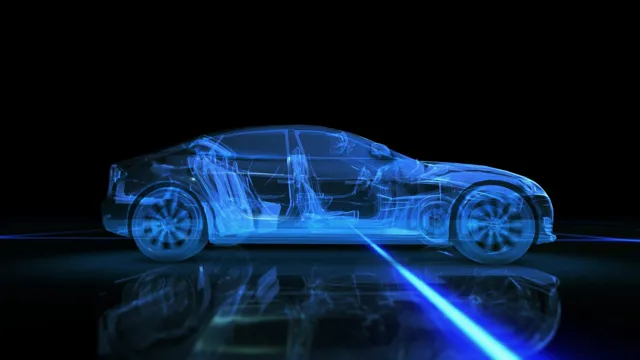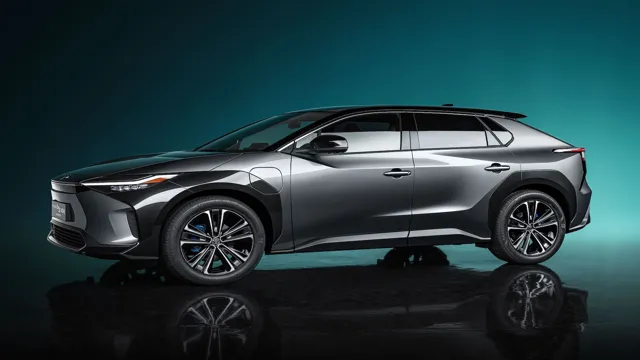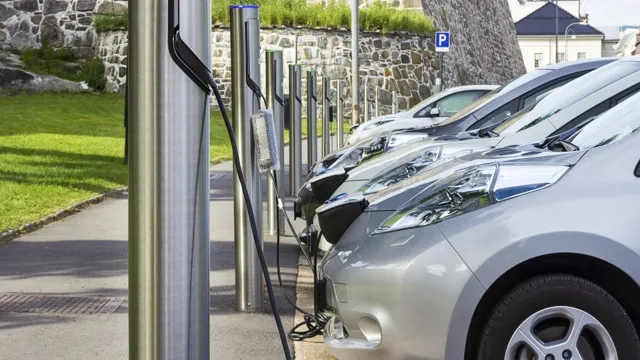The Shocking Truth: Exploring the Technology Behind Electric Cars
Electric cars have rapidly carved out a niche in the automotive industry, with many people curious about the technology behind these eco-friendly vehicles. Unlike traditional cars that run on gasoline, electric vehicles operate with electric motors powered by rechargeable battery packs. This innovative technology allows electric cars to provide a quiet and smooth ride that emits zero tailpipe emissions, making them healthier for the environment and more affordable than fossil-fuel-powered vehicles.
The technology behind electric cars involves sophisticated software that manages the car’s energy consumption, and electric motors that use energy from the battery packs to power the wheels. Every element in an electric vehicle, from its regenerative braking system to its charging ports, is designed with sustainability in mind. An interesting fact is that electric cars are still an evolving technology, with research and innovation continuing to improve them every day.
The development of new battery technologies, such as solid-state batteries, is paving the way for more efficient electric vehicles with longer ranges, more charging options, and better durability. In this blog, we will delve deeper into the technology behind electric cars and the advancements that are driving the green revolution in the automotive industry. We will explore the benefits, limitations, and innovative features of electric cars and the role they play in creating a cleaner environment.
Join us on this journey as we uncover the technology that’s powering the future of transportation.
Electric Motors
The technology behind electric cars is fascinating, and it all centers around the electric motor. Unlike gasoline-powered vehicles that have a combustion engine, electric cars utilize an electric motor to propel the vehicle forward. The electric motor converts electrical energy stored in batteries into mechanical energy that drives the wheels.
The motors are incredibly efficient and can generate significant power while using very little energy. They do not require fuel or oil changes, making them more environmentally friendly and cost-effective in the long run. The Tesla Model S, for example, has a single motor that can produce up to 700 horsepower, making it a top performer in the luxury car world.
The electric motor technology continues to advance, and we can expect to see more efficient, powerful, and affordable electric cars hitting the market soon.
How they work
Electric motors are highly efficient machines that convert electrical energy into mechanical energy, making them an important tool in modern society. These motors can be found in a variety of appliances, from washing machines and refrigerators to electric cars and industrial machinery. The motor works by utilizing the attractive and repulsive forces between magnetic fields.
The basic components of the motor consist of a stator, rotor, and brushes. The stator contains a stationary set of coils. Meanwhile, the rotor contains a set of electromagnets that turn on and off depending on the electrical current flowing to the motor.
As the magnetic fields interact, they cause the rotor to turn, resulting in the mechanical energy being produced. The efficiency of the motor largely depends on the design and quality of its components. Therefore, a well-designed motor can be more energy-efficient and longer-lasting than a low-quality motor.
In summary, the electric motor plays a crucial role in our daily lives, and its design is constantly improving to optimize its performance and reduce its environmental impact.

Types of electric motors
Electric motors are used in a variety of applications, from industrial machinery to electric vehicles. There are different types of electric motors available, each designed for a specific purpose. Some of the most common types include AC motors, DC motors, stepper motors, and servo motors.
AC motors, which are powered by alternating current, are commonly used in large applications, such as industrial machinery. DC motors, on the other hand, are powered by direct current and are often used in smaller applications, such as toys and household appliances. Stepper motors are precision motors that can move in small, precise increments, making them ideal for use in robotics and other precision applications.
Finally, servo motors are used in a variety of equipment, from industrial machinery to robotics, due to their high precision and accuracy. Each type of electric motor has its own advantages and disadvantages, so it is important to choose the one that is best suited for your application.
Battery Technology
When it comes to electric cars, one of the key components that sets them apart from their gasoline-powered counterparts is their battery technology. Unlike traditional cars which rely on gasoline or diesel fuel to generate energy, electric cars are powered by large battery packs that store energy and convert it into electricity to power the vehicle. The technology behind these batteries is constantly evolving, with researchers and engineers working to create batteries that are more efficient, longer lasting, and more affordable.
Some of the most advanced battery technologies currently in development include solid-state batteries, which use a solid electrolyte rather than a liquid one, and lithium-air batteries, which use oxygen as a reactant to generate energy. As battery technology continues to evolve, we can expect to see electric cars become more common on our roads, providing a greener and more sustainable mode of transportation for people around the world.
Lithium-Ion Batteries
Lithium-ion batteries are an essential component of many of the devices we use on a daily basis, from smartphones and laptops to electric cars and even power grids. These batteries are praised for their high energy density, which means they can store a lot of energy in a small package, translating to longer battery life for our gadgets. Lithium-ion batteries work by moving lithium ions between two electrodes, allowing for the production and storage of electrical energy.
However, there are concerns about the safety of these batteries due to their tendency to overheat and catch fire. Manufacturers have implemented various safety features, such as temperature sensors and battery management systems, to address these concerns. With ongoing research into materials and technology, lithium-ion batteries are expected to continue to improve and become even more efficient and safe in the future.
Charging times and range
Battery technology plays a crucial role in determining a car’s charging times and range. Generally, electric vehicles use lithium-ion batteries, which have a high energy density and low self-discharge rate. Manufacturers are continually improving battery technology to increase range and decrease charging times.
For instance, Tesla’s Model S boasts a battery range of up to 402 miles on a single charge, while electric cars from other manufacturers have a range of up to 300 miles. Moreover, the charging times of electric vehicles depend on the battery’s capacity and charging station’s power output. The greater the battery capacity, the longer it takes for it to charge fully.
Similarly, charging times vary depending on the charging station’s output. EV owners can charge their vehicles overnight using a standard charger, while fast chargers found along highways and public charging stations are ideal for long-distance travels. As the technology and infrastructure for electric vehicles continue to improve, charging times and range will become less of a concern for prospective buyers.
Regenerative Braking
Regenerative braking is a crucial technology behind electric cars. In a traditional fuel-powered vehicle, the braking system functions by converting the kinetic energy generated by the wheels into heat energy as the brake pads press against the discs. However, this energy goes to waste and is lost to the environment.
The regenerative braking technology is different; it harvests and stores the kinetic energy lost during braking, which is then used to power the vehicle. As the electric motor operation reverses, it turns into a generator that captures the kinetic energy and converts it into electrical energy by sending the energy back to the battery, where it is stored for later use. This process effectively reduces the car’s dependence on the battery, extending the vehicle’s driving range, and reducing emissions.
Regenerative braking is an excellent example of how electric cars provide a sustainable and efficient way to move away from fossil fuels and towards a greener planet.
How it works
Regenerative braking is a system that allows electric vehicles and hybrids to recover some of the lost energy during braking. When the brakes are applied, the system captures the energy in the form of electricity and stores it in the vehicle’s battery. This process is possible due to the use of an electric motor in the braking system, which acts as a generator and converts the kinetic energy from the brakes into electrical energy.
The energy generated is then used to power the vehicle’s electric components, reducing the reliance on the battery and improving the overall efficiency of the vehicle. The regenerative braking system also helps to reduce wear and tear on the brakes, cutting down on maintenance costs. With regenerative braking, electric vehicles can travel further on a single charge, making them more practical and cost-effective in the long run.
So, next time you see an electric vehicle slowing down, just think of all the energy it’s recapturing and reusing!
Benefits for electric cars
Regenerative braking is one of the many benefits of electric cars. This technology allows the car to convert the kinetic energy produced by the vehicle’s motion and store it in the battery system. By doing so, it helps to increase the vehicle’s range and decrease the amount of energy required to power it.
Moreover, the process of regenerative braking is very efficient, converting up to 70% of the kinetic energy produced by the vehicle’s motion into electrical energy. This means that the car’s battery can be charged without needing to be plugged into a charging station, which is an excellent convenience for drivers. Additionally, regenerative braking also helps to reduce wear and tear on the brakes, which leads to less maintenance and replacement costs for the owner.
Overall, regenerative braking is just one of the many reasons why electric cars are becoming increasingly popular among drivers worldwide.
Electric Vehicle Control Systems
Electric cars may look similar to traditional gasoline vehicles from the outside, but their mechanisms and control systems are different. The technology behind electric cars is quite fascinating as it involves complex systems that work together seamlessly to power and control the vehicle. Electric vehicles utilize an electric motor instead of an internal combustion engine, and the motor is controlled by a sophisticated system that manages the flow of electrical energy from the battery pack to the motor.
The control system receives information from multiple sensors throughout the car, such as the position of the accelerator pedal and the brake system, and uses this information to determine how much power to deliver to the motor and when to apply regenerative braking. The onboard computer system in an electric vehicle is essential in controlling the motor, managing the battery system, and providing data to the driver about the car’s performance. Implemented in the electric vehicle’s technology are many initiatives to conserve energy, including creating systems that use less power in specific parts of the car.
The technology behind electric cars is continuously evolving to improve efficiency, reduce energy consumption, and improve the driving experience.
Managing power and performance
Electric vehicle control systems play a critical role in managing power and performance. These systems are responsible for coordinating various components of the electric drivetrain, including the battery, motor, and power electronics. They ensure that the vehicle operates efficiently by managing the delivery of power to the motor and regulating the battery’s charge level.
At the same time, they control the vehicle’s performance by adjusting torque, speed, and acceleration to meet driver demands. Electric vehicle control systems are essential for achieving the range, performance, and reliability necessary for widespread electric vehicle adoption. They work seamlessly in the background, but their impact is felt every time an electric vehicle accelerates smoothly or maintains a steady speed, all while maximising battery life.
Interfaces and user experience
Electric Vehicle Control Systems (EVCS) When it comes to electric vehicles, the interface and user experience are critical elements that can make or break a customer’s satisfaction with the car. EVCS, or electric vehicle control systems, are the technological platforms responsible for managing and monitoring the vehicle’s crucial functions. These systems include everything from the battery management system to the dashboard displays and infotainment systems.
With EVCS, drivers can monitor their vehicle’s state-of-charge, estimate their range, and even control cabin temperature remotely. A well-designed EVCS can significantly enhance the driving experience by providing timely and informative feedback to the driver. However, an inadequate interface can make it challenging to navigate these features, leading to frustration.
A truly effective EVCS should provide a seamless and intuitive experience, allowing the driver to focus on the road ahead. As electric vehicles continue to gain popularity, we can expect to see more sophisticated and user-friendly EVCS, making driving an electric car even more accessible and enjoyable for people everywhere.
Conclusion
In conclusion, the technology behind electric cars is no longer a thing of the future, but a present reality. It has driven us towards a new age of sustainable transportation that not only benefits the environment but also the drivers’ pockets. From the battery pack to regenerative braking, the evolution of technology has allowed electric cars to become more efficient, faster, and able to travel longer distances, making it a more viable alternative to the traditional gasoline-powered vehicle.
The future of electric cars looks bright, as new innovations and technologies continue to emerge, leading the way towards a cleaner and greener transportation future. So, don’t be shocked if one day, you find yourself behind the wheel of an electric car, zipping silently and efficiently through the streets, leaving behind a trail of zero emissions in your wake!”
FAQs
What is the basic technology behind electric cars?
Electric cars are powered by one or more electric motors that run on electricity stored in rechargeable batteries. The batteries are charged by plugging the car into an electrical outlet or a charging station.
How efficient are electric cars compared to gasoline cars?
Electric cars are much more efficient than gasoline cars as the electric motors convert over 75% of the energy stored in the battery to power the wheels, while gasoline engines convert only about 20% of the energy in gasoline to power.
What is regenerative braking in electric cars and how does it work?
Regenerative braking is the process where electric cars use their motors to slow down the vehicle instead of using brakes. The kinetic energy produced when slowing down is converted into electricity and stored back in the battery.
How long does it take to charge an electric car battery?
The charging time for an electric car battery depends on the type of charger used and the size of the battery. With a normal household electric outlet, it can take up to 12-20 hours to fully charge a battery. However, with fast charging stations, it can take as little as 30 minutes to charge a battery up to 80%.





